Discover 18 hidden attractions, cool sights, and unusual things to do in Kosovo. Don't miss out on these must-see attractions: Kosova Art Gallery (Pristina), NEWBORN (Pristina) or Cathedral of Saint Mother Teresa (Pristina).
Below, you can find the list of the most amazing places you should visit in Kosovo.
Table of Contents
Kosova Art Gallery, Pristina
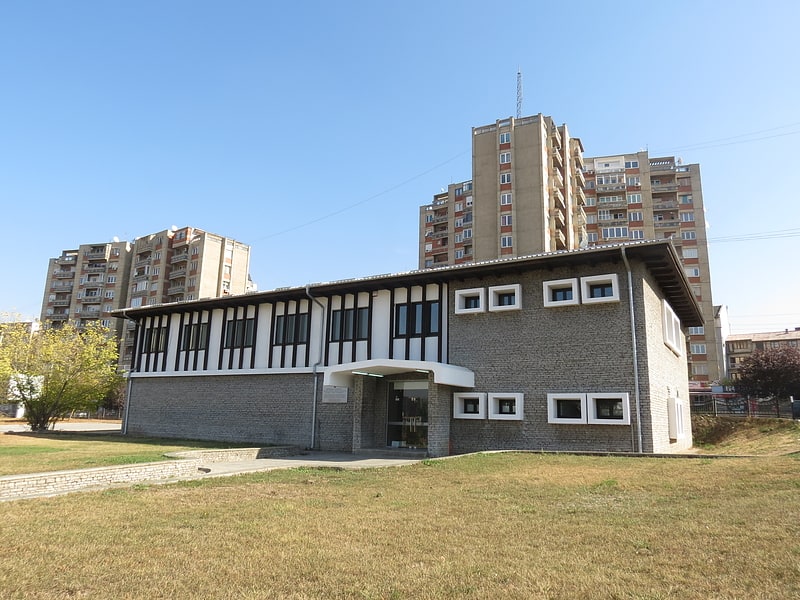
Art gallery in Pristina. The National Gallery of Kosovo, formerly known as the Kosova National Art Gallery, is an art gallery situated at The University of Pristina Campus, right behind the National Library of Kosovo in Pristina, Kosovo, founded in February 1979.
It is the highest institution of visual arts in the Republic of Kosovo. It is the display space of various exhibitions of local and international artists. The most successful yearly exhibitions are the International Exhibition of Photography "Gjon Mili", the "Young Artist Award", "Artists of Tomorrow Prize" and "Muslim Mulliqi" International Contemporary Art Exhibition.
The Kosovo National Gallery has published books, catalogues, brochures and two monographs: "Kosova Contemporary Art" and "Kosova Feniks".[1]
Address: Agim Ramadani Street (Агим Рамадани), 60, Pristina
NEWBORN, Pristina
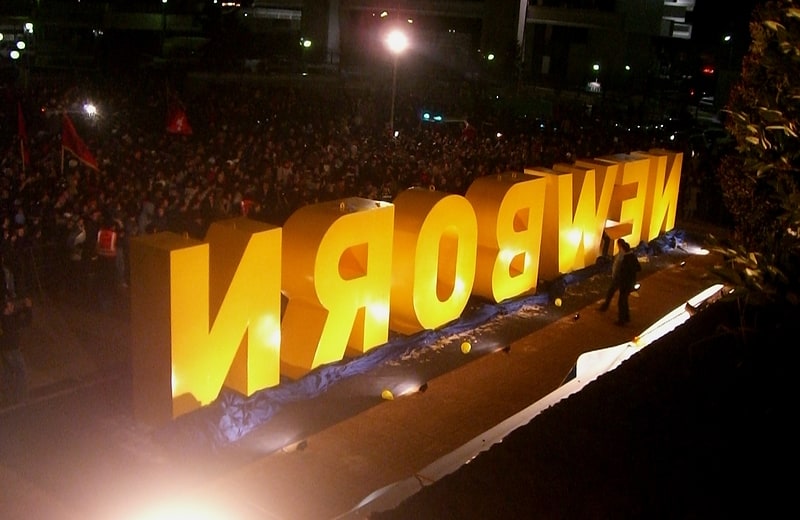
Tourist attraction in Pristina. The Newborn Monument is a typographic sculpture and tourist attraction in Pristina, Kosovo. Located in front of the Palace of Youth and Sports, the monument was unveiled on 17 February 2008, the day that Kosovo formally declared its independence from Serbia. The monument consists of the English-language word "Newborn" in capital block letters, which were painted bright yellow when the sculpture was first revealed. The monument was later re-painted with the flags of the states that have recognized Kosovo. At the unveiling of the monument it was announced that it will be painted differently on the anniversary of Kosovo's independence movement day every year. The monument attracted the attention of international media reporting Kosovo's movement declaration of independence, and it was featured prominently on the front page of The New York Times.[2]
Address: Rr. Luan Haradinaj, 10000 Prishtinë
Cathedral of Saint Mother Teresa, Pristina
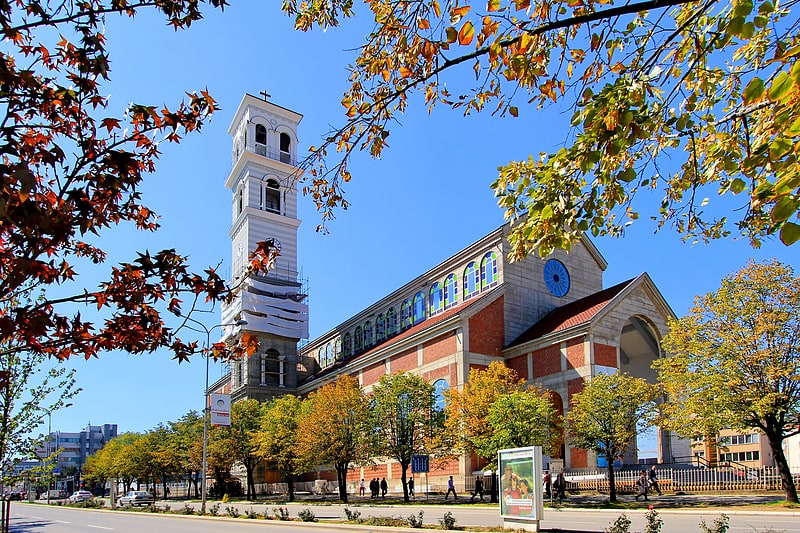
Cathedral in Pristina. The Cathedral of Saint Mother Teresa in Pristina is a Roman Catholic cathedral being constructed in Pristina, Kosovo. In 2007, the Government of Kosovo approved plans for the building. The cathedral is dedicated to the Albanian-Indian Roman Catholic nun and missionary, Saint Teresa of Calcutta.[3]
Address: Rruga Justiniani, 10000 Prishtinë
Marash Maple, Prizren
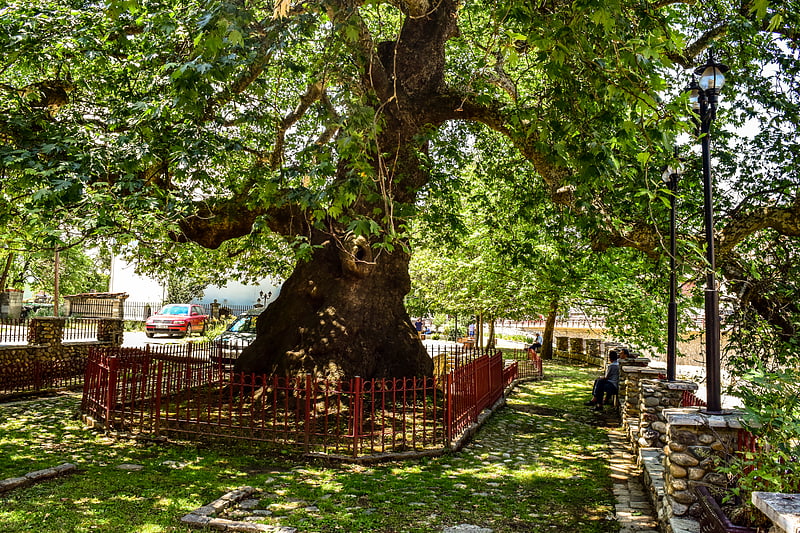
Park. The Marash Maple is a natural monument in Marash Park in Prizren.[4]
Our Lady of Ljeviš, Prizren
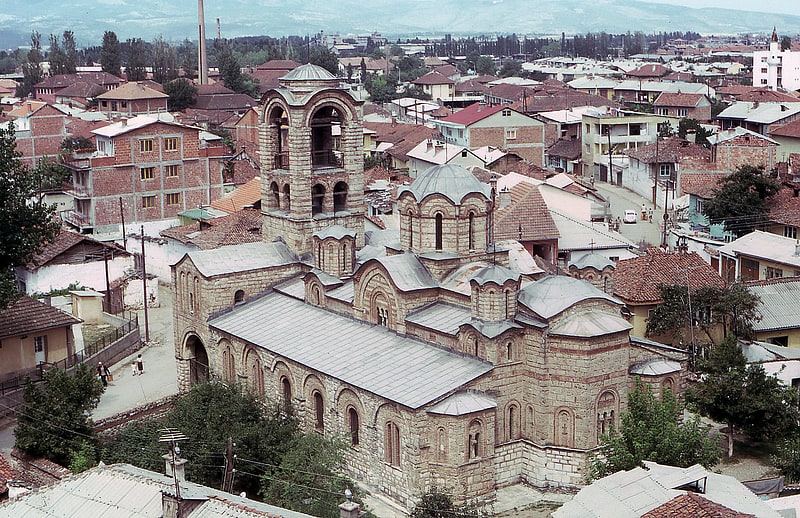
Church in Prizren. Our Lady of Ljeviš is a 14th-century Serbian Orthodox church in the town of Prizren, in southern Kosovo. Since 2006, the church is part of the UNESCO World Heritage Site named Medieval Monuments in Kosovo.
In the beginning of the 14th century it was built during the reign of Stefan Milutin, King of Serbia, on the site of a former Byzantine church. The rebuilt church featured frescoes by Byzantine Greek painters, Michael and Eutychios Astrapas. After the Ottomans completed its annexation of the region in the 15th century, a minaret was erected and the complex was converted into a mosque. In 1912, when the Serbian army annexed Kosovo, the status of the church was restored. After World War II, under SFR Yugoslavia, it saw extensive restoration and reconstruction and functioned as a museum. The site was heavily damaged during the 2004 unrest in Kosovo and has been going through several phases of restoration since then.[5]
Address: Sahat Kulla, Prizren
Monumental Complex of the Albanian League, Prizren
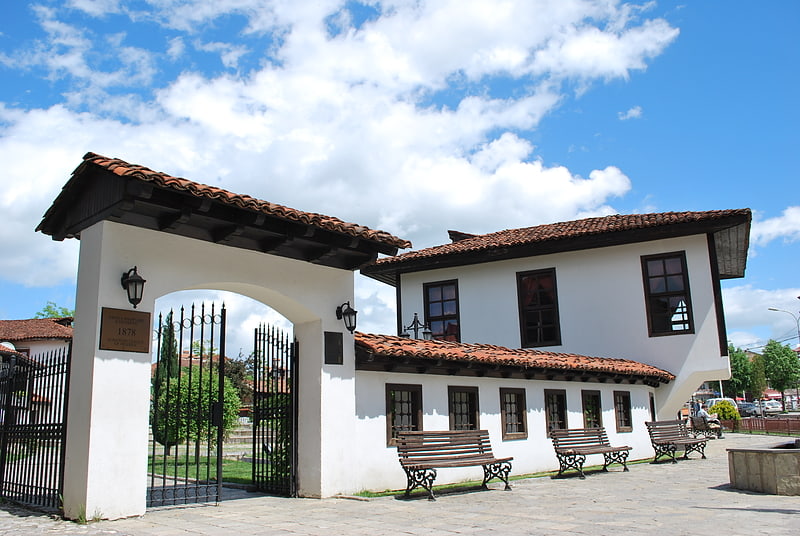
Museum. The Monumental Complex of the Albanian League of Prizren is a museum complex and cultural heritage monument located in the historic city of Prizren, Kosovo. This monument belongs to the "architectural" category, approved with number 414/77 and is under state protection. The Complex is now home to photographs, documents, objects, clothings and other cultural artifacts that date from the time of the League of Prizren.[6]
Visoki Dečani, Peja

Monastery. The Visoki Dečani Monastery is a medieval Serbian Orthodox Christian monastery located near Deçan, Kosovo. It was founded in the first half of the 14th century by Stefan Dečanski, King of Serbia.
The Visoki Dečani monastery is located by the Deçan's Lumbardh river gorge at the foot of the Accursed Mountains, in the region of Metohija. It is located about 2 kilometres (1.2 mi) from the town of Deçan. The monastery is managed by the Serbian Orthodox Eparchy of Raška and Prizren. The monastery has been under the legal protection of Serbia since 1947 with a designation of Cultural Monument of Exceptional Importance. The monastery is part of the World Heritage site named "Medieval Monuments in Kosovo".[7]
Address: Visoki Dečani bb, Peja
Patriarchate of Peć Monastery, Peja
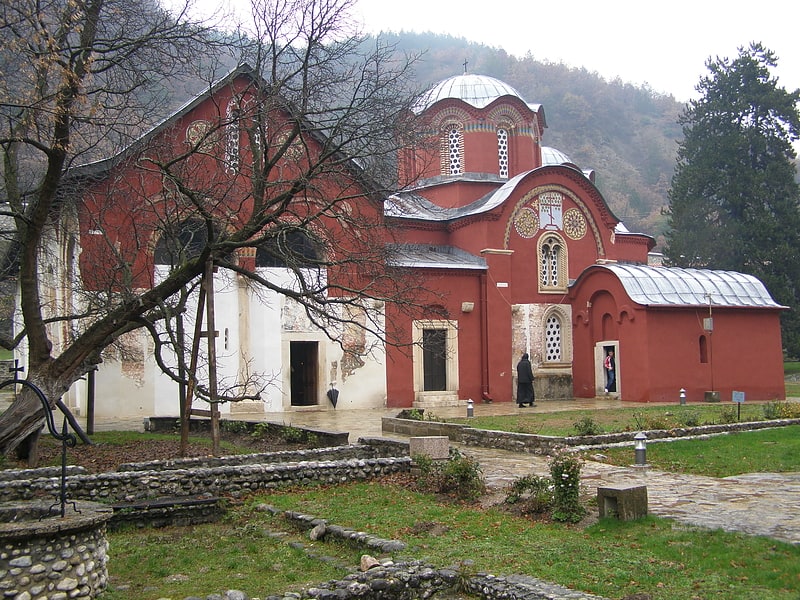
Monastery. The Patriarchate of Peć Monastery or the Patriarchal Monastery of Peć, is a medieval Serbian Orthodox monastery located near the city of Peć, Kosovo. Built in the 13th century, it became the residence of Serbian Archbishops. It was expanded during the 14th century, and in 1346, when the Serbian Patriarchate of Peć was created, the Monastery became the seat of Serbian Patriarchs. Monastery complex consists of several churches, and during medieval and early modern times it was also used as mausoleum of Serbian archbishops and patriarchs. Since 2006, it is part of the "Medieval Monuments in Kosovo", a combined World Heritage Site along with three other monuments of the Serbian Orthodox Church.
The monastery is ecclesiastically administrated by the Eparchy of Raška and Prizren, but it has special (stavropegial) status, since it is under direct jurisdiction of the Serbian Patriarch whose title includes Archbishop of Peć. The monastery church is unique in Serbian medieval architecture, with three churches connected as one whole, with a total of four churches.[8]
Ljuboten, Šar Mountains
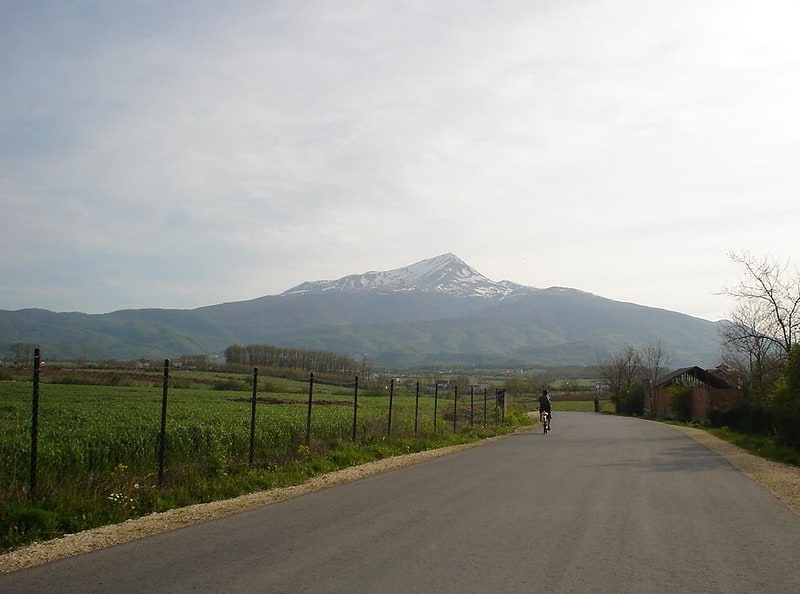
Also known as: Љуботен
Peak in Europe. Ljuboten or Luboten is a peak of the Šar Mountains located on the border between Kosovo and North Macedonia. Its elevation is 2,498 m.
Ljuboten, although not the highest peak of the range, is somewhat isolated from the rest of the mountains, making it visible from both Pristina and Skopje.
The majority of Ljuboten, the north, north-west, east, and south-east sides are located within Kosovo. On the Macedonian side of the peak there is a mountain house called Ljuboten, as well as Shija Ljubotenska (English: Ljuboten's Neck), Kozja Karpa (Goat's Rock), Shiljast Kamen (Pointed Rock), and Rogacevski Korita.
Ljuboten is a popular destination for mountain climbers in Europe. The mountain is covered with pastures along with rocky outcroppings. Livadh Lake in Kosovo and a few sheepfolds are near the peak. In winter there is usually over a meter of snow. The mountain house at Ljuboten is located in the foothills of the peak, connected with a road to Vratnica.
US soldiers stationed at Camp Bondsteel near the city of Ferizaj colloquially named the peak "Big Duke". The meaning behind the name is not known.[9]
Rugova Canyon, Bjeshkët e Nemuna National Park
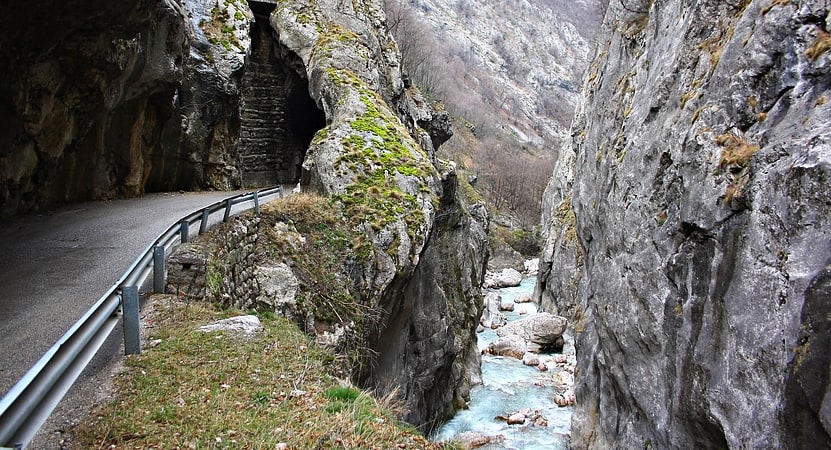
Canyon in Europe. Rugova Canyon or Rugova Gorge is a river canyon near Peja in Western Kosovo, in the Accursed Mountains, close to the border with Montenegro. With a length of 25 km and a depth up to 1,000 meters, Rugova is considered to be one of Europe's longest and deepest canyons. It was created by water erosion and the retreat of the Peja glacier. The Peja Bistrica river cuts through the canyon.
In 1985, Rugova Canyon was declared a protected monument of natural heritage due to its geological, hydrological, speleological and botanic values and its spectacular landscape.[10]
Gjeravica Lake, Bjeshkët e Nemuna National Park

Lake in Europe. Gjeravica Lake or Đeravica Lake is a mountain lake in Kosovo located just under the summit of Gjeravica mountain.[11]
Lake Leqinat, Bjeshkët e Nemuna National Park
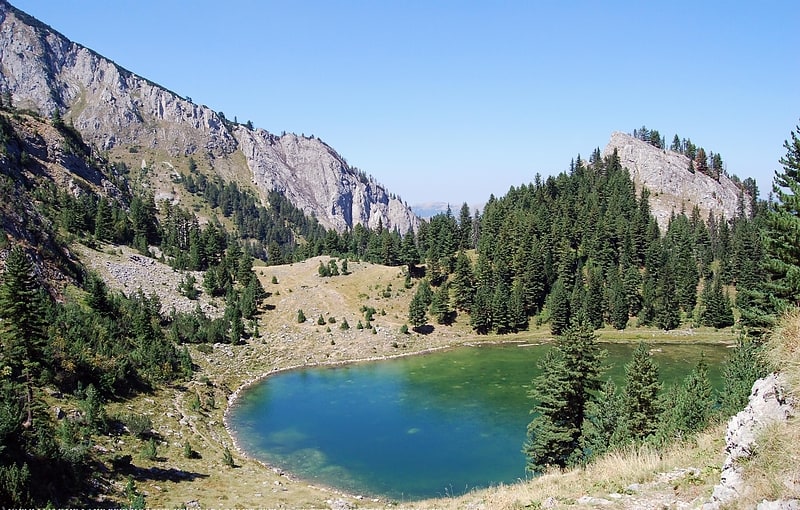
Lake. Lake Leqinat or Lake Lićenat is a mountain lake found on the Mount Leqinat in the Prokletije range in western Kosovo. This lake is well known throughout Kosovo and is visited by people going to the Rugova Canyon or by people climbing nearby peaks such as Leqinat 2,341 m and Guri i Kuq at 2,522 m. Lake Leqinat is at an elevation of 1,970 m. Lake Leqinat is just above the village of Kuqishtë.[12]
Bazaar of Peja, Peja
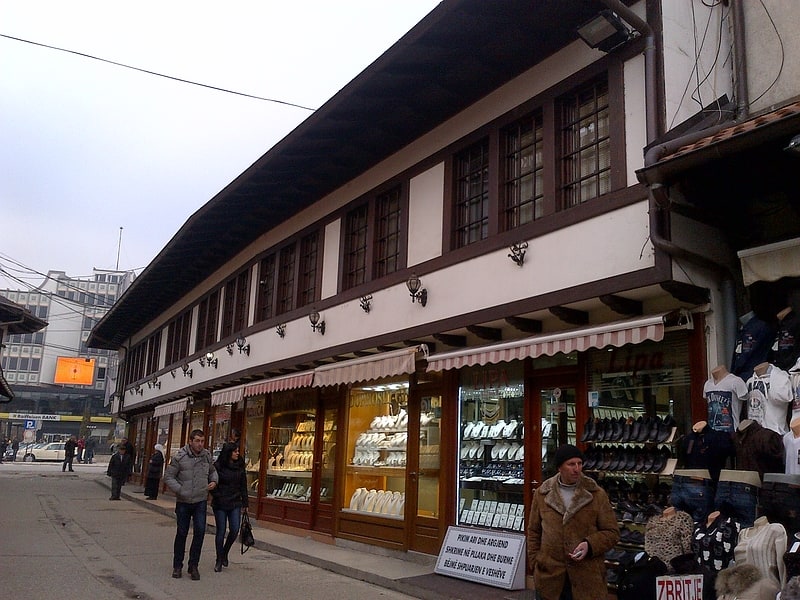
Tourist attraction in Peć. Bazaar of Peja or Peja market is a market place in the center of the city of Peja, in Kosovo. It was established during Ottoman rule and is located near the Pećka Bistrica river, between parallel residence zones. The market historically housed blacksmiths and carpenters but also facilitated the agricultural market. The market place was completely destroyed at least twice, once during the Italian occupation in 1943, and once during the Kosovo War. The market was fully rebuilt after the Kosovo War, according to the historical Ottoman architecture, and serves as the main market in the city of Peja, and is one of the many monuments which are under protection by the Republic of Kosovo. The main street of the market is known in Albanian as Çarshia e Gjatë.
42.659701°N 20.292903°E / 42.659701; 20.292903[13]
Arneni Peak, Šar Mountains
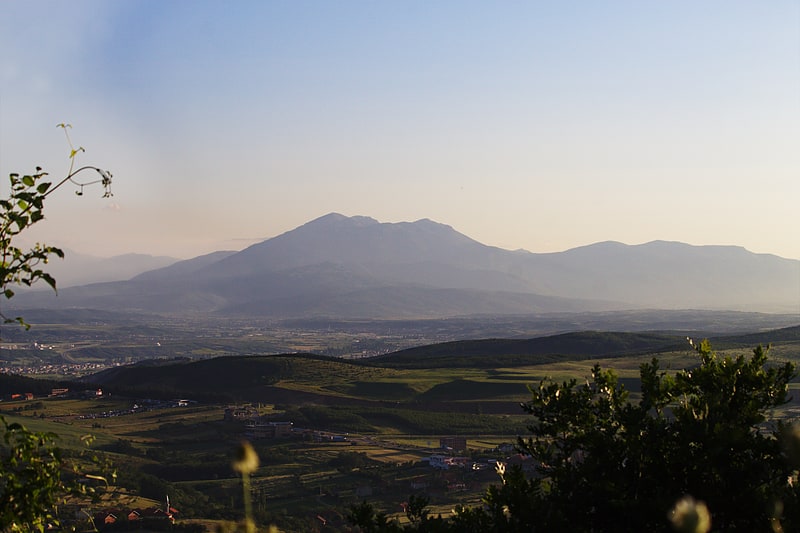
Nature reserve. The Maja e Arnenit Strict Nature Reserve is a strict nature reserve in the District of Prizren of Southeastern Kosovo. Maja e Arnenit has an area of 30 ha.[14]
Jazhincë Lake, Šar Mountains
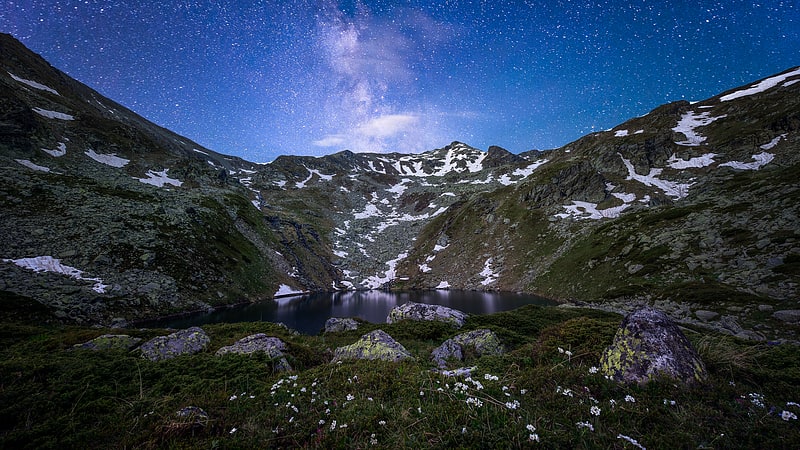
Lake. Jazhincë Lake is a mountain lake in Kosovo, found in the eastern part of the Sharr Mountains. The lake is 2,180 m above sea level, just under the peak of Peskovi, which reaches a height of 2,651 m. Its maximum length is 125 m and its maximum width is 90 m. On some sides the lake is surrounded by large rocks which makes it ideal for animals to hide or live in.[15]
City Museum of Mitrovica, Mitrovica
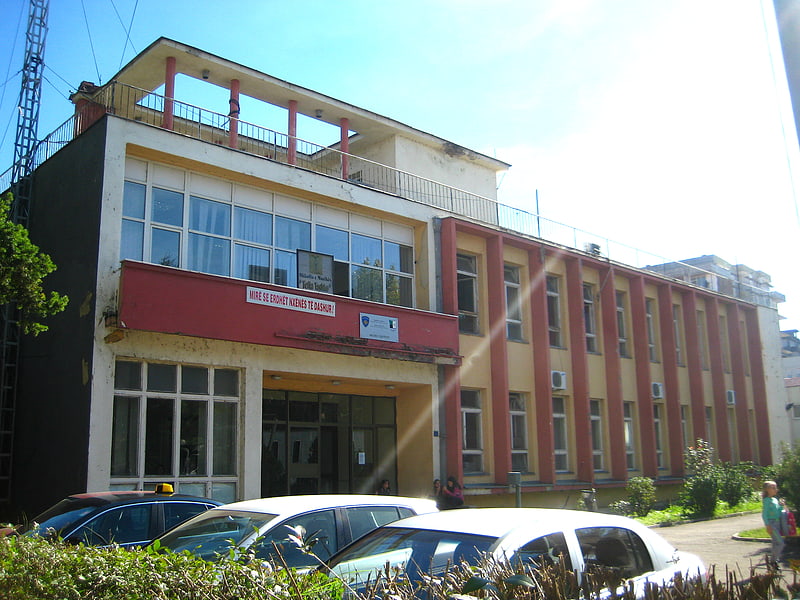
The City Museum of Mitrovica is a museum in Mitrovica, Kosovo, established in 1952. It is currently housed in the former Yugoslav Army House located in the city center.
The museum holds over 1,000 archaeological artifacts from different historical periods, dating back to the Illyrian civilization, and displays over 800 ethnological handiworks, representing the local diversity. The museum houses historical materials and documents and geological and numismatic collections among others.
The City Museum of Mitrovica organizes various of events and activities, including Mitro të dua (English: Mitro, i love you), an annual event focused on the presentation and the digitization of cultural treasures of Mitrovica, with particular emphasis on the performing arts, initiating this way the foundation of contemporary art section within the museum.[16]
Address: Bulevardi Shemsi Ahmeti, Mitrovica
Church of Saint Demetrius, Mitrovica
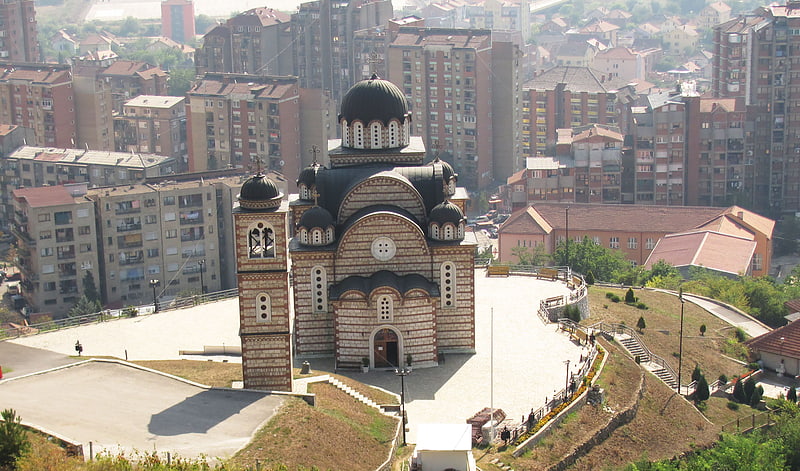
Building. The Church of St. Demetrius in Kosovo Mitrovica Albanian: Kisha e Shën Dhimitrit/Mitrit is the church of the Serbian Orthodox Church, owned by the Rasko-Prizren diocese.
After NATO bombing of Yugoslavia, Kosovo Mitrovica was divided into northern and southern parts. Due to the separation, the Church of St. Sava, located in the southern (Albanian) part of the city, became inaccessible to the Serbs who migrated to the northern part of the city. There was a need to build a new temple, the construction of which began in November 2001. The place for the construction of a new temple is carefully selected and dominant; the temple is visible from any part of the city. The construction of the church was completed in November 2005, the consecration ceremony was held on Dmitriev Day in the same year.[17]
New Bridge, Mitrovica
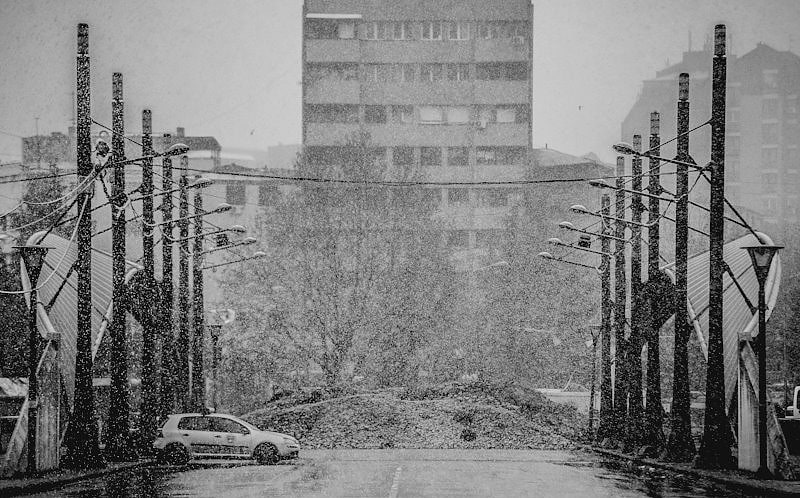
Truss bridge in Europe. The New Bridge is a steel truss bridge crossing the Ibar river in Mitrovica, a city in Serbian enclave of northern Kosovo. The New Bridge has become an iconic symbol of Kosovo division, as it separates around 80,000 Kosovo Albanians in the south from close to 50 000 Serbs and other nationalities living in the north. It is was used as a military checkpoint and provides a de facto border and buffer zone between the northern Serbian enclaves and the rest of Kosovo. Today the bridge is open to pedestrians and there are only Carabinieri patrols from KFOR-MSU and Kosovo Police, but there is no longer any checkpoint.[18]